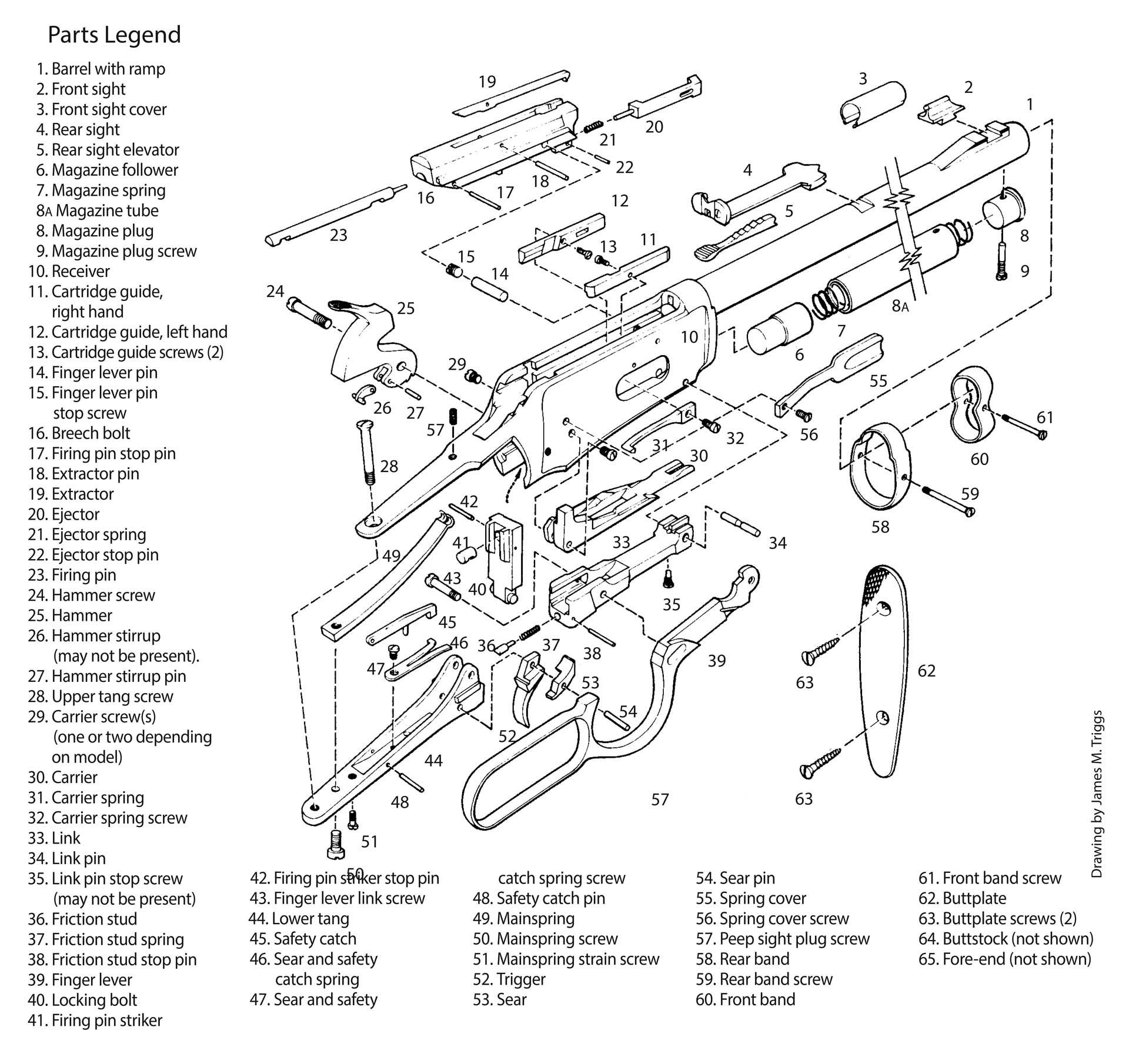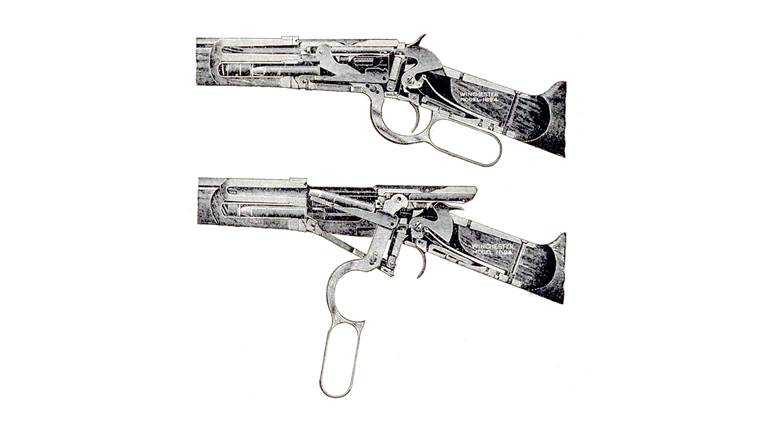
In November 1894, Winchester introduced its new Model 94 lever-action rifle with the following prophetic words: “We believe that no repeating rifle system ever made will appeal to the eye and understanding of the rifleman as this will and that use will continue to warrant first impressions.” Winchester’s new rifle quickly became the preferred firearm of Western settlers, prospectors, law enforcement officers, hunters and ranchers who appreciated its power, reliability, light weight and compact dimensions.
Today, more than 100 years and 5,500,000 rifles later, the Winchester Model 94 remains a bestseller for those same reasons. Like so many other successful rifles and shotguns, the Winchester Model 94 rifle was designed by John M. Browning who sold his Model 94 patent (No. 524702 of August 1894) to Winchester.

Although similar in appearance to other Winchester rifles, the Model 94 differs in that it was the first repeating rifle designed exclusively for use with smokeless powder. To accommodate the then-new propellant, Winchester Model 94 rifles had high-strength, nickel-steel barrels. Initially, Model 94 rifles were offered in two popular blackpowder chamberings: .32-40 Win. and .38-55 Win.
In the spring of 1895, Winchester introduced two new cartridges that were designed from the beginning for use with smokeless powder: the .25-35 Win. and the now classic .30-30 Win. The combination of power, low recoil and relatively flat trajectory of the .30-30 Win. cartridge revolutionized hunting. The .32 Win. Spl. cartridge chambering was added in 1902. A little more than 83 years would pass before other calibers would be introduced: .44 Mag. in 1984, .45 Colt in 1985, 7-30 Waters in 1989 and .357 Mag. in 1992. By far the greatest number of Model 94 rifles have been made in .30-30 Win.
The Winchester Model 94 will be encountered configured as a rifle, saddle-ring carbine or trapper’s short carbine. Small-loop or large-loop levers, round or octagonal barrels in lengths from 14" to 26", takedown models and wood or synthetic stocks may be encountered in seemingly never-ending combinations. Finishes range from the pedestrian to the elegant. Regardless, the basic design has changed very little through the years.
In 1964, the Model 94 design was slightly modified to reduce production costs. Subsequent rifles are distinguished as “Post-’64” in contrast to those made earlier as “Pre-’64.” In 1982, angled ejection and a crossbolt safety became standard in order to accommodate the increasing number of hunters who preferred optical sights. The following year, Winchester introduced a much-modified model called the Model 94 Big Bore in calibers .307 Win., .356 Win., .375 Win. and, later, .444 Marlin.

Disassembly
First, make certain the rifle is unloaded and all ammunition has been removed from the work area. With the action closed and the hammer down, turn out the upper tang screw (28), then remove the buttstock.
Remove the finger lever pin stop screw (15) from the left side of the receiver, then, using a small punch, drift out the finger lever pin (14) through the hole on the receiver’s right side.

Next, remove the link pin stop screw (35), if present, then, using a small punch, drift out the link pin (34) from either side of the receiver (Fig. 1). Remove the finger lever (39) and link (33) through the bottom of the receiver.

Remove the two carrier screws (29) from the right and left sides of the receiver. (Some models may have only one screw.) The carrier (30) will drop out of the bottom of the receiver. Turn out the hammer screw (24) (Fig. 2), hold the safety catch up, pull the trigger and remove the hammer upward and outward while pulling the lower tang (44) rearward (Fig. 3). Remove the locking bolt (40) by sliding it out of the bottom of the receiver. Remove the breech bolt (16) by sliding it out the back of the receiver.

Remove the spring cover screw (56) from the receiver’s right side, then remove the spring cover (55). Remove the magazine plug screw (9) from the front of the magazine tube, then remove the magazine plug (8). Withdraw the magazine spring (7) and follower (6) through the front of the magazine tube.
Remove front and rear band screws (59 and 61), then slide the fore-end (65) and rear barrel band up on the barrel. Loosen the rear barrel band (58) from the fore-end, then pull the magazine tube (8A) from the front of the receiver.
Further disassembly is not recommended. Reassembly is in the reverse order.





































